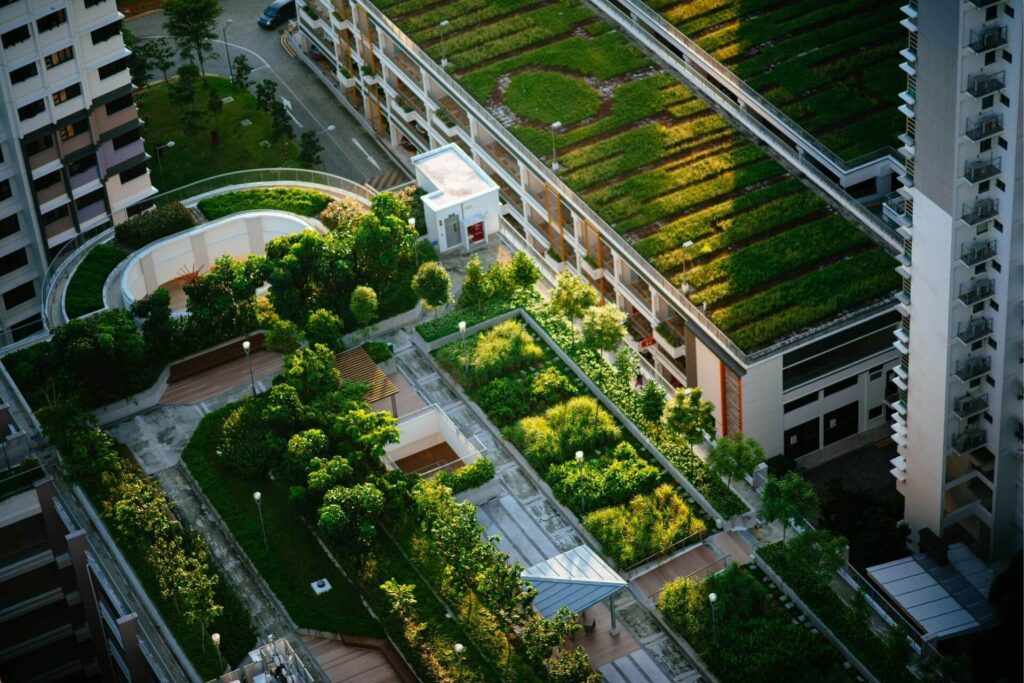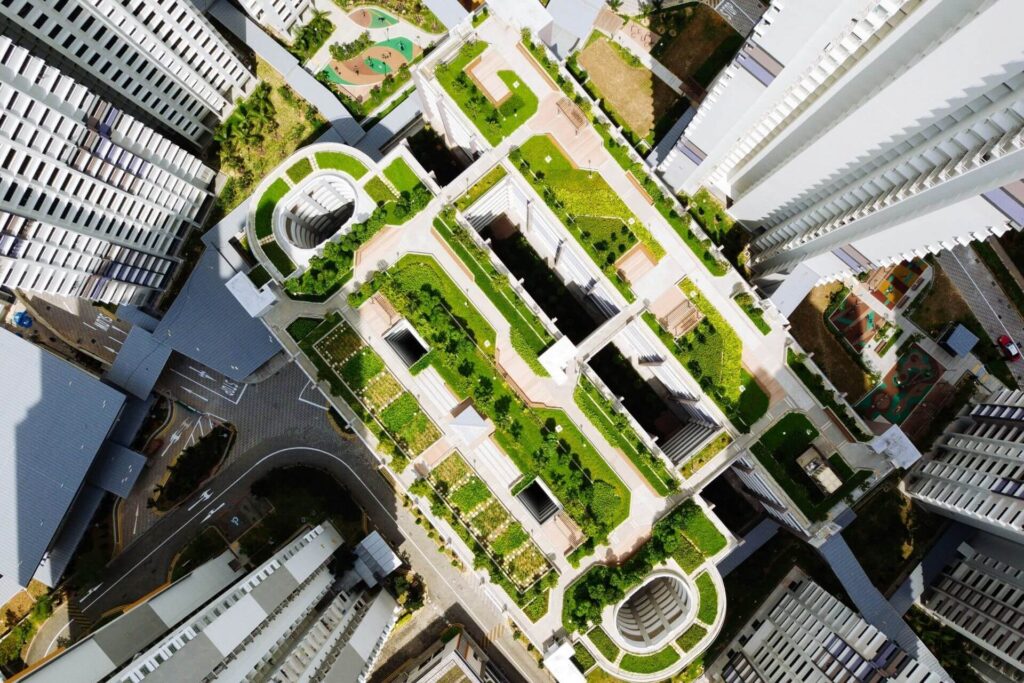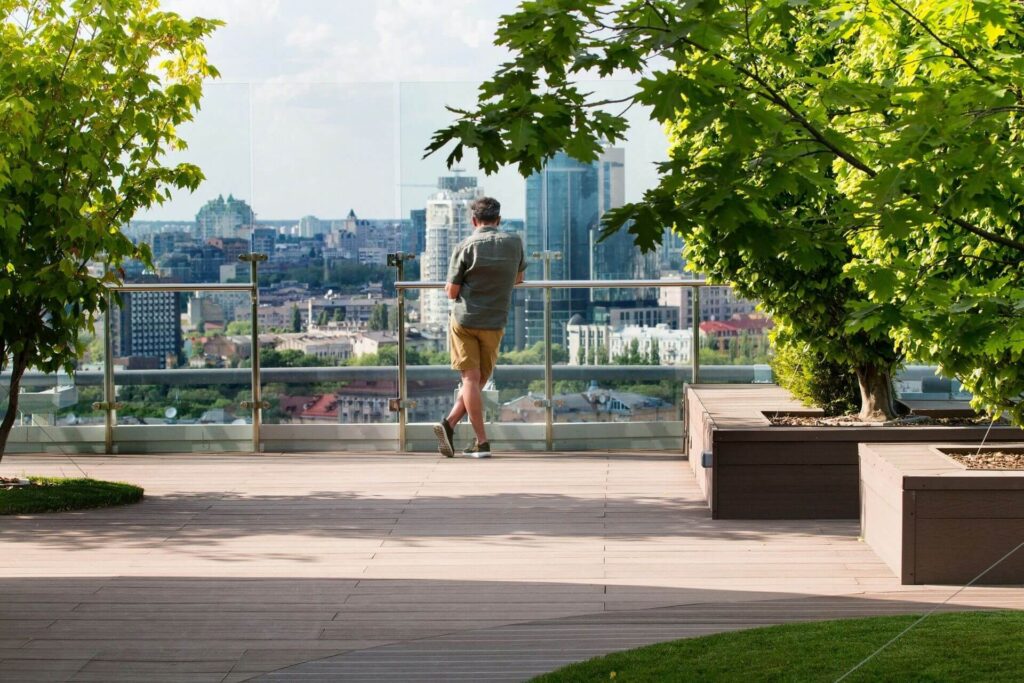As cities grow denser and skylines stretch higher, the question of how to maintain a connection to nature becomes more pressing. Traditional green spaces often compete with the demand for development, leaving little room for parks and gardens at street level.
One solution that rises above the rest is green roofs. These architectural aspects fit seamlessly into urban landscapes, providing a healthier and sustainable living environment for cities.
Types of Green Roofs and Their Architectural Details
Green roofs come in various forms and offer distinct ecological and structural benefits. While they all share the goal of enhancing sustainability, differences in design, substrate thickness and plant selection shape how they function.
Intensive Green Roofs
Often compared to traditional ground-level gardens, intensive vegetated roofs boast deep substrates. They’re typically more than 12 inches thick — allowing for plant life diversity — from small trees to shrubs. This design provides high water-holding capacity, supporting lush greenery that turns rooftops into functional, park-like spaces.
However, they come with trade-offs. The additional weight demands stronger structural support, and maintenance is intensive, requiring regular irrigation, weeding and fertilization.
Semi-Intensive Green Roofs
Semi-intensive roof gardens feature substrate layers between 6 and 12 inches thick. This moderate depth supports smaller vegetation like grasses, herbs and compact shrubs. This type of green roof creates a layered, textured aesthetic without the extensive structural requirements of its intensive counterparts.
While they still need consistent maintenance, they’re more adaptable to different building types. Their lighter load and versatile plant options make them doable for residential and commercial spaces.
Extensive Green Roofs
Designed with efficiency in mind, extensive eco-roofs are the minimalist cousins in the green roof family. They support hardy, drought-resistant plants like sedum, mosses and other low-maintenance ground covers with substrate depths of 3-4 inches. This factor makes them perfect for large-scale applications like expansive commercial rooftops.
These roofs shine in their simplicity. They require little to no irrigation and minimal upkeep, and they’re also cost-effective for stormwater management and biodiversity conservation.
Multi-Course Extensive Green Roofs
Multi-course extensive vegetated roofs incorporate multiple substrate layers ranging from 4-6 inches deep. Its layers improve water retention and support slightly more diverse plant life while maintaining a lightweight structure. Popular in the U.S., this design is more favorable due to its balance of sustainability, cost-effectiveness and ease of maintenance.

Green Roof Benefits of Enhancing Urban Quality of Life
It’s undeniable that living roofs are appealing to look at, but their true value runs deeper. These living systems create healthier urban environments. As cities’ temperatures rise and pollution increases, these rooftops provide many advantages to overcome the barriers to sustainability.
The key benefits of eco-roofs include:
- Urban heat island mitigation: Vegetated roofs can regulate temperature, as they’re 30 to 40 degrees Fahrenheit cooler than traditional rooftops. This temperature difference combats the heat island effect, where concrete-heavy cities retain excessive heat. Therefore, buildings stay cooler in the summer, reducing energy costs for air conditioning.
- Improved air quality: The vegetation naturally filters pollutants and captures airborne particles, cleaning the air for healthier living conditions.
- Stormwater management: Green roofs act like sponges, absorbing rainwater and reducing runoff. This ability prevents urban flooding, easing the burden on drainage systems and improving water quality.
- Biodiversity and habitat restoration: Living roofs provide much-needed habitats for birds, bees and other pollinators. Because they support urban biodiversity, they offer refuge to species in dense city environments.
- Extended roof life span: The protective layers shield the underlying roofing materials from UV rays, extreme temperatures and mechanical damage.
Examples of Green Roofs Making High-Density Cities More Livable

Eco-roofs are redefining what it means to live well in densely populated areas. Since urban environments often come with a cost, garden rooftops improve their conditions through the following examples.
1. Salesforce Transit Center Park in San Francisco
Spanning 1.5 million square feet, the Salesforce Transit Center is more than a transportation hub — it’s also home to a lush rooftop park. Perched atop the transit center is a 5.4-acre green roof park with numerous plant species, walking trails, open lawns and an 800-seat amphitheater.
This space has provided a retreat for city dwellers within the last few years, offering a serene environment amidst the surrounding high-rises. The park also serves critical environmental functions. For example, vegetation reduces the carbon footprint of public transit and cars by absorbing the exhaust and filtering the air. The transit center has over 600 trees and 16,000 plants, allowing it to capture 12 tons of carbon dioxide annually.
2. Gotham Greens Greenhouse in Brooklyn
The Gotham Greens Greenhouse sits atop a Whole Foods Market in Brooklyn, New York. This sprawling 20,000-square-foot rooftop greenhouse is a fully operational urban farm producing fresh produce in the heart of the city.
It’s taking urban agriculture to new heights by supplying leafy greens and herbs to local grocery stores, restaurants and the community. By providing a rooftop greenhouse within the city, the surrounding environment can reduce carbon emissions associated with food transportation.
Additionally, it reduces food waste by supplying fresh greens year-round. The greenhouse also uses hydroponic technology, requiring 95% less water than conventional farming methods. With its capability of serving multiple purposes, it supports sustainability and food security in a way that redefines how densely populated areas use rooftops.
3. Postal Service Rooftop Gardens in Chicago and Manhattan
In Chicago and Manhattan, the adaptive reuse of former United States Postal Service (USPS) facilities has given rise to some of the largest green rooftop gardens in the country. These expansive eco-roofs breathe new life into aging infrastructure while creating more room for green spaces.
The Chicago facility has 3.5 acres of greenery, while Manhattan features a 2-acre green roof. These gardens actively contribute to sustainability, from reducing stormwater runoff to regulating building temperatures. Yet, what’s most striking about these projects is their scale and impact. By leveraging previously underused industrial spaces, these green roofs turn concrete-heavy rooftops into multifunctional landscapes.

Redefining Urban Living Through Green Roofs
The need for sustainable, livable spaces in cities is greater than ever. With living roofs, urban environments can maintain vibrant ecosystems that enhance aesthetics while addressing environmental challenges. As such, cities may cultivate healthier living areas, proving that even the densest urban landscapes always have room to grow.

Leave a Reply